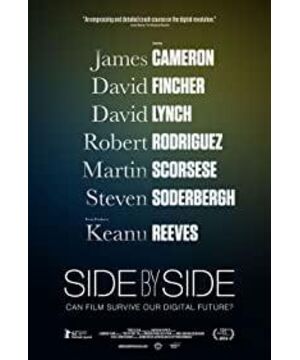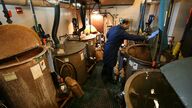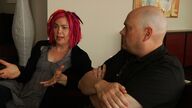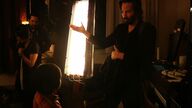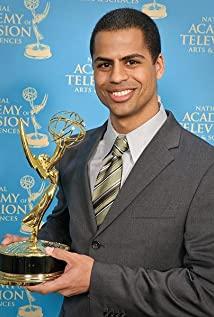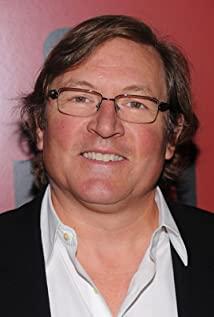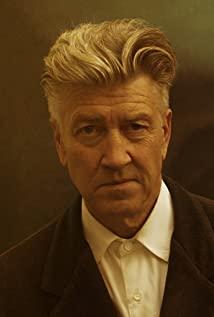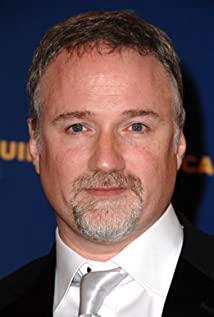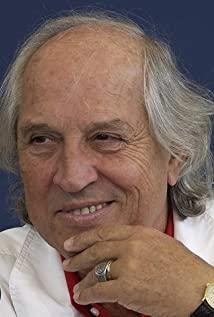Q: Association member photographer John Bailey
A: Director Chris Kenneally
Q: How do you feel about the high attention this film has received so far? Even AOScott wrote a leading commentary in the New York Times.
A: It's incredible that "Yin and Yang" has received attention. There are too many praises. This feels so good. I hope hard-core movie fans and audiences outside the industry can watch this movie. The original intention of our filming was to satisfy the audience who already had a certain understanding of the topic without making the laymen feel obscure. We want to make a film that is entertaining and educational. Hope it succeeded.
Q: How did you get together with Keno Reeves to film "Yin and Yang"?
A: There is a movie starring Keno's production called "Henry's Crime", and I am supervising this film later. Digital intermediates, sound mixing, cost reporting meetings, these things that most producers have changed their way to hide, Keno attended, and the two of us talked a lot about topics that later appeared in the film. Keno has watched the documentary "Crazy Legs Conti: Zen and the Art of Competitive Eating" I made in my early years, I guess he liked it. He said: "You are a documentary filmmaker, why don't we make a documentary to record what is happening in the film industry. Let us remember this moment of change." I thought about it for about half a second, and then said: "Of course! I'm in!"
Q: How did the work experience as a post-supervisor give you a unique perspective when shooting this film?
A: I have been doing post-supervision in New York since 1998 and experienced many technical changes. For about thirteen years, I have been explaining to my relatives and friends what my subsistence work does. I know what people are interested in and what areas need further explanation. I have also established contacts in Technicolor, Sixteen19, Deluxe, Goldcrest, etc., and can seek their advice and help.
Q: There is a "special thanks" in the ending subtitles. It mentions many well-known artists who have not appeared in the movie. You must have visited them. How to decide which filmmakers to release and which filmmakers not to release?
A: This is a really difficult editing process. We interviewed about 140 people and only 70 people were used in the final film. Get too many excellent interviews, this can be regarded as a kind of happy trouble. We try to include as many different people as possible to cover this discussion from a broad perspective. But at the same time, we also want the audience to feel that this documentary has characters, and as the story goes on, there will be characters they hope to hear over and over again.
Q: Obviously, the useless interviews constitute an important historical archive. Are there plans to "archive" unused material? Or put it on the Internet or for film scholars to use?
A: We are trying to organize all the completed interviews for the reference of film students, scholars, fans and any other audience who want to explore further. Also talking about a set of books included in the original interview.
Q: Speaking of "archiving", the topic of long-term archiving in the film only takes up a short space. This topic is just not "hot" enough. In my discussions with my colleagues in the Association of Moving Image Archivists (AMIA), I also found that it seems that only archivists are issuing warnings about the fragility of digital media, and few filmmakers can listen to it. Some of my fellow photographers have never read the two Digital Dilemma reports published by AMPAS. Are you curious about any archivists you interviewed?
A: When doing research for this documentary, I did read most of the digital dilemma reports. Archiving is definitely a big problem. I don't agree with the statement that there is not enough time for this field in the documentary. There is a chapter devoted to this issue towards the end. We didn't really give the answer, but presented Scorsese, Soderbergh, Lucas, Kodak, Eastman's folks, and many people's views on the archive. This is definitely one of the documentaries that really touches the audience. The world has become so fast that no one can give a solid answer to the digital archive, which is scary to think about. Many people feel that film is still the best way to archive mobile images.
Q: What camera and format did you use to make this documentary?
A: "Yin and Yang are in harmony" was shot with a digital camera. We used Panasonic HPX 170s for the interview. Our photographer Chris Cassidy also took some auxiliary material (B-Roll) with Canon 5D.
Q: Did this film make a film copy? Or do all the screenings use digital methods? How do you archive your material?
A: So far there are only digital elements. Keno and I definitely want to make some film material for archiving in the future. In addition, I want to put a reel of film in the cupboard.
Q: What is the future of film copy in the screening process? Any thoughts on digital screening? Or about the replacement of digital projectors by large-screen TVs, such as the one used in the opening of "Yin and Yang" at Lincoln Center?
A: I think film copy will become a special case. The screening is definitely going digital. I was not present when the film was on at Lincoln Center. After attending the question and answer session, I saw the huge TV screen. There is a beautiful movie screening environment here, and the audience I chatted with afterwards also said that the 152-inch plasma screen displayed great results.
Q: Regarding the discussion of film/digital, do you have any personal opinions to share with you? Few people have experienced so many different viewpoints like you. If you interview yourself, what would you ask?
A: The number is definitely on the rise. I think it will basically replace film as the main way of creating and showing movies. I love film, and I am inspired by the pictures and stories that artists create with it. I hope it will continue to exist as an option. I will (also) ask myself, how could I be so lucky to join such an interesting and inspiring project! Making this documentary definitely gave me a lot of insights. This experience was wonderful, and I am really grateful to have the opportunity to meet so many talented people to record their thoughts. The work is not light, but I am absolutely happy to ask me to do it again tomorrow.
Q: A few weeks before the start of the film, you showed the film to the members at the Club of the American Cinematographers Association. How did they respond, and did they gain anything?
A: It is a great opportunity to show a documentary at the ASC base camp. There are many photographers in the audience that we have interviewed. They certainly make me nervous when watching this movie. These are true experts. I am ready to be destroyed in the Q&A session! Fortunately, everyone seems to be using "Yin and Yang". Many people said to me on the spot that they were really happy that someone had made a documentary on this topic. It is great to have a few drinks with members and guests, and to know that there are people who are ensuring the continuous development of film art in both technology and art. I am glad to know that there is such a group of people who will not accept poor quality pictures, and will continue to fight, create and ensure that the pictures captured, manipulated, and shared meet the highest standards. This is really inspiring.
View more about Side by Side reviews


